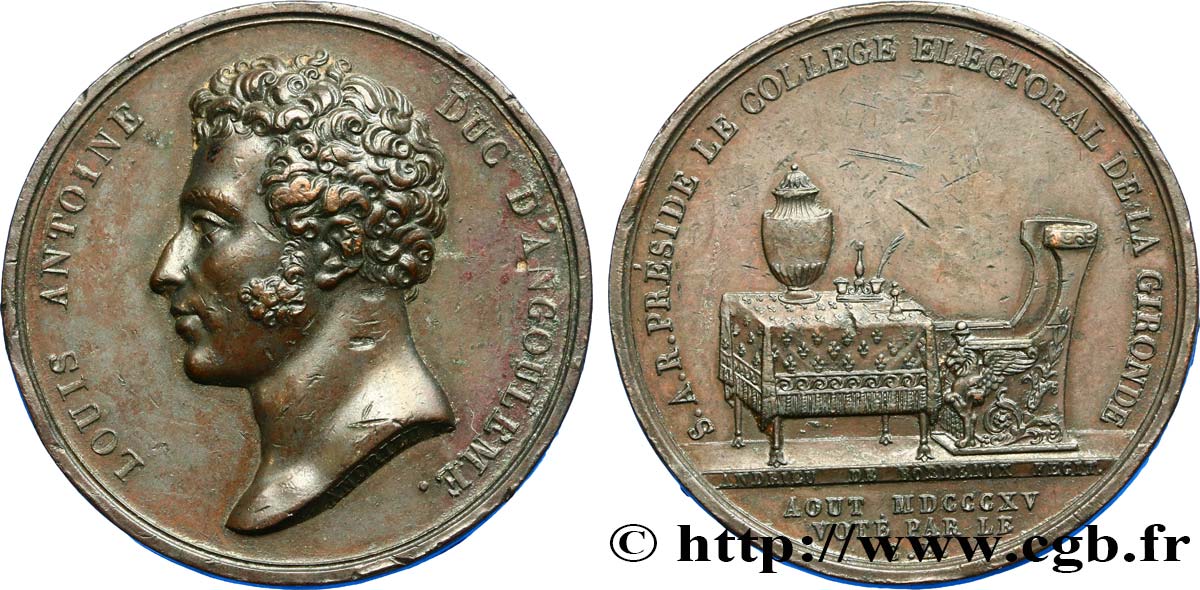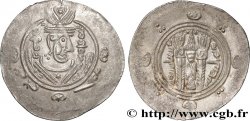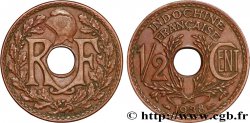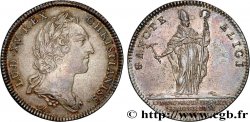E-auction 421-333435 - fme_446698 - LOUIS XVIII Médaille, Louis-Antoine d'Artois duc d'Angoulême, Présidence du collège électoral
You must signin and be an approved bidder to bid, LOGIN TO BID. Accounts are subject to approval and the approval process takes place within 48 hours. Do not wait until the day a sale closes to register. Clicking on « bid » constitutes acceptance of the terms of use of cgb.fr private e-auctions.
Bids must be placed in whole Euro amounts only. The sale will start closing at the time stated on the item description; any bids received at the site after the closing time will not be executed. Transmission times may vary and bids could be rejected if you wait until the last second. For further information ckeck the E-auctions F.A.Q.
NO BUYER'S FEE.
NO BUYER'S FEE.
| Estimate : | 75 € |
| Price : | 24 € |
| Maximum bid : | 39 € |
| End of the sale : | 10 May 2021 18:38:30 |
| bidders : | 6 bidders |
Type : Médaille, Louis-Antoine d'Artois duc d'Angoulême, Présidence du collège électoral
Date: 1815
Mint name / Town : 33 - Bordeaux
Metal : bronze
Diameter : 40,9 mm
Orientation dies : 12 h.
Engraver ANDRIEU Jean-Bertrand (1761-1822)
Weight : 34,5 g.
Edge : lisse
Coments on the condition:
Intéressante médaille avec une belle patine sombre. Nombreux petits coups
Obverse
Obverse legend : LOUIS ANTOINE - DUC D’ANGOULEME.
Obverse description : Tête à gauche du Duc d’Angoulême, signé sur le tranché du cou : ANDRIEU F..
Reverse
Reverse legend : S.A.R. PRESIDE LE COLLEGE ELECTORAL DE LA GIRONDE// SUR LA PLINTHE : ANDRIEU DE BORDEAUX FEGIT // AOUT MDCCCXV/ VOTE PAR LE C.E..
Reverse description : Bureau et chaise, avec une urne et un encrier sur le bureau.
Commentary
La Gironde est le nom donné à un groupe politique de la Révolution française qui fut majoritaire à l’Assemblée législative (en face des Montagnards) et à la Convention nationale, leurs députés étant issus de la région de Bordeaux.
Médaille signée ANDRIEU DE BORDEAUX REGIT sur la ligne d’exergue au revers, et ANDRIEU sur la base du cou au droit.
Louis-Antoine d’Artois, né le 6 août 1775 à Versailles, France, et mort à Görz, Autriche — actuellement Nova Gorica (Slovénie) — le 3 juin 1844, petit-fils de France et duc d’Angoulême (1775-1824), puis Louis-Antoine de France, dauphin de France (1824-1830) puis « comte de Marnes » (1830-1844), puis en 1836 Louis de France, est un prince de la maison royale de France, fils de Charles-Philippe de France, ce dernier étant comte d'Artois et le futur roi Charles X, et de Marie-Thérèse de Savoie.
Lors des événements de la révolution de Juillet (1830), peu après l’abdication de son père Charles X, il renonce lui-même à ses droits en faveur de son neveu Henri d'Artois. Il s’exile ensuite avec le titre de courtoisie de « comte de Marnes ». À la mort de son père (1836) jusqu'à son propre décès (1844), il devient l’aîné des Capétiens et le « chef de la maison de France », prétendant à la Couronne de France et reconnu comme roi par les légitimistes sous le nom de « Louis XIX ».
Parmi les distinctions militaires qui lui ont été données, le duc d’Angoulême était notamment colonel général des cuirassiers et dragons, grand-amiral de France et généralissime de l’armée d'Espagne..
The Gironde is the name given to a political group of the French Revolution which was in the majority in the Legislative Assembly (opposite the Montagnards) and in the National Convention, their deputies being from the Bordeaux region.
Medal signed ANDRIEU DE BORDEAUX REGIT on the exergue line on the reverse, and ANDRIEU on the base of the neck on the right.
Louis-Antoine d'Artois, born on August 6, 1775 in Versailles, France, and died in Görz, Austria — currently Nova Gorica (Slovenia) — on June 3, 1844, grandson of France and Duke of Angoulême (1775-1824), then Louis-Antoine of France, Dauphin of France (1824-1830) then \\\"Count of Marnes\\\" (1830-1844), then in 1836 Louis of France, is a prince of the royal house of France, son of Charles-Philippe of France, the latter being Count of Artois and the future King Charles X, and of Marie-Thérèse of Savoy.
During the events of the July Revolution (1830), shortly after the abdication of his father Charles X, he himself renounced his rights in favor of his nephew Henri d'Artois.. He then went into exile with the courtesy title of \\\"Count of Marnes\\\". From the death of his father (1836) until his own death (1844), he became the eldest of the Capetians and the \\\"head of the house of France\\\", claimant to the Crown of France and recognized as king by the legitimists under the name of \\\"Louis XIX\\\".
Among the military distinctions awarded to him, the Duke of Angoulême was notably Colonel General of the Cuirassiers and Dragoons, Grand Admiral of France and Generalissimo of the Army of Spain..
Médaille signée ANDRIEU DE BORDEAUX REGIT sur la ligne d’exergue au revers, et ANDRIEU sur la base du cou au droit.
Louis-Antoine d’Artois, né le 6 août 1775 à Versailles, France, et mort à Görz, Autriche — actuellement Nova Gorica (Slovénie) — le 3 juin 1844, petit-fils de France et duc d’Angoulême (1775-1824), puis Louis-Antoine de France, dauphin de France (1824-1830) puis « comte de Marnes » (1830-1844), puis en 1836 Louis de France, est un prince de la maison royale de France, fils de Charles-Philippe de France, ce dernier étant comte d'Artois et le futur roi Charles X, et de Marie-Thérèse de Savoie.
Lors des événements de la révolution de Juillet (1830), peu après l’abdication de son père Charles X, il renonce lui-même à ses droits en faveur de son neveu Henri d'Artois. Il s’exile ensuite avec le titre de courtoisie de « comte de Marnes ». À la mort de son père (1836) jusqu'à son propre décès (1844), il devient l’aîné des Capétiens et le « chef de la maison de France », prétendant à la Couronne de France et reconnu comme roi par les légitimistes sous le nom de « Louis XIX ».
Parmi les distinctions militaires qui lui ont été données, le duc d’Angoulême était notamment colonel général des cuirassiers et dragons, grand-amiral de France et généralissime de l’armée d'Espagne..
The Gironde is the name given to a political group of the French Revolution which was in the majority in the Legislative Assembly (opposite the Montagnards) and in the National Convention, their deputies being from the Bordeaux region.
Medal signed ANDRIEU DE BORDEAUX REGIT on the exergue line on the reverse, and ANDRIEU on the base of the neck on the right.
Louis-Antoine d'Artois, born on August 6, 1775 in Versailles, France, and died in Görz, Austria — currently Nova Gorica (Slovenia) — on June 3, 1844, grandson of France and Duke of Angoulême (1775-1824), then Louis-Antoine of France, Dauphin of France (1824-1830) then \\\"Count of Marnes\\\" (1830-1844), then in 1836 Louis of France, is a prince of the royal house of France, son of Charles-Philippe of France, the latter being Count of Artois and the future King Charles X, and of Marie-Thérèse of Savoy.
During the events of the July Revolution (1830), shortly after the abdication of his father Charles X, he himself renounced his rights in favor of his nephew Henri d'Artois.. He then went into exile with the courtesy title of \\\"Count of Marnes\\\". From the death of his father (1836) until his own death (1844), he became the eldest of the Capetians and the \\\"head of the house of France\\\", claimant to the Crown of France and recognized as king by the legitimists under the name of \\\"Louis XIX\\\".
Among the military distinctions awarded to him, the Duke of Angoulême was notably Colonel General of the Cuirassiers and Dragoons, Grand Admiral of France and Generalissimo of the Army of Spain..








 Report a mistake
Report a mistake Print the page
Print the page Share my selection
Share my selection Ask a question
Ask a question Consign / sell
Consign / sell
 Full data
Full data















